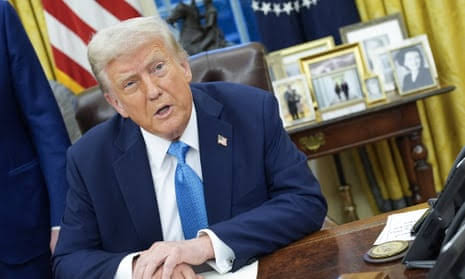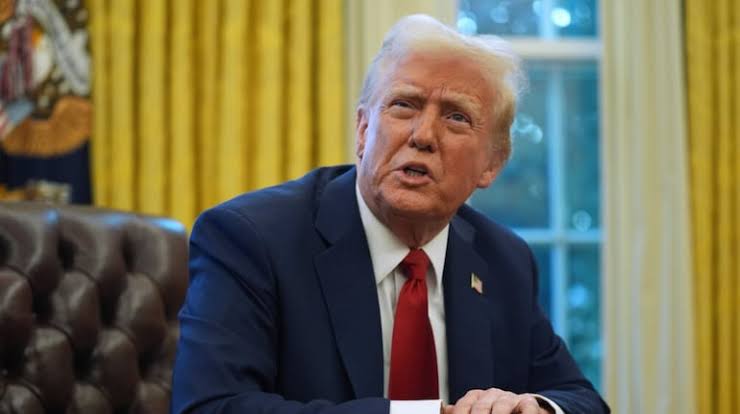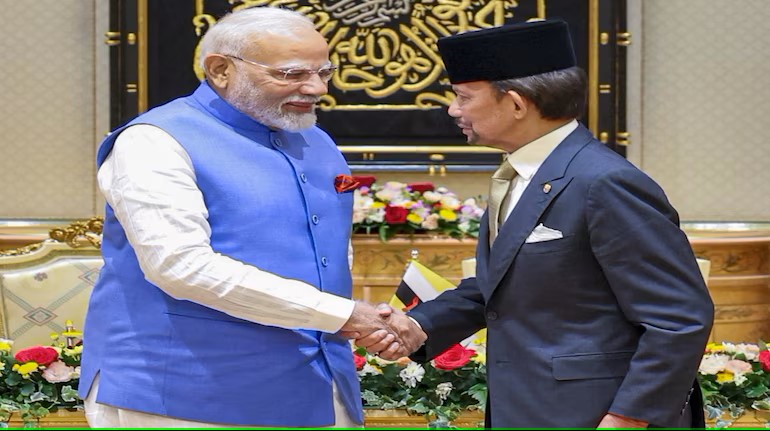The United States is bracing for economic turbulence as President Donald Trump moves forward with sweeping tariffs on its key trading partners—Mexico, Canada, and China. The White House has confirmed that the tariffs, set to take effect on February 1, will impose a 25% duty on imports from Mexico and Canada, while China will face a 10% tariff.
 The announcement has sent shockwaves through global markets, with leaders of the affected nations voicing strong opposition and vowing to respond. Canadian Prime Minister Justin Trudeau acknowledged the hardship these tariffs will impose on Canadian businesses and consumers. He emphasized that while Canada does not seek conflict, it will not hesitate to act if necessary. “We’re ready with a response—a purposeful, forceful but reasonable, immediate response. It’s not what we want, but if he moves forward, we will also act,” Trudeau stated. He also dismissed Trump’s justification for the tariffs, which included accusations of Canada facilitating fentanyl distribution and illegal border crossings, pointing out that fewer than 1% of fentanyl-related issues in the U.S. originate from Canada.
The announcement has sent shockwaves through global markets, with leaders of the affected nations voicing strong opposition and vowing to respond. Canadian Prime Minister Justin Trudeau acknowledged the hardship these tariffs will impose on Canadian businesses and consumers. He emphasized that while Canada does not seek conflict, it will not hesitate to act if necessary. “We’re ready with a response—a purposeful, forceful but reasonable, immediate response. It’s not what we want, but if he moves forward, we will also act,” Trudeau stated. He also dismissed Trump’s justification for the tariffs, which included accusations of Canada facilitating fentanyl distribution and illegal border crossings, pointing out that fewer than 1% of fentanyl-related issues in the U.S. originate from Canada.
Meanwhile, Mark Carney, the frontrunner to become Canada’s next prime minister, has taken a more defiant stance. In an interview with the BBC, he described Trump’s tariffs as an act of economic intimidation and vowed that Canada would “match dollar for dollar” any duties imposed by the U.S.
Mexico, taking a more measured approach, has signaled its preparedness to respond if necessary. President Claudia Sheinbaum reaffirmed her government’s commitment to standing up for national dignity and sovereignty, making it clear that Mexico will not tolerate subordination in trade relations. She disclosed that her administration had already been in talks with Trump’s team before his return to office and had devised multiple strategies—referred to as “Plan A, Plan B, and Plan C”—to counter any trade restrictions imposed by the U.S.
China, the third country targeted by Trump’s tariffs, has been more reserved in its immediate response. A spokesperson for the Chinese Embassy in Washington expressed strong opposition to the move, warning that trade wars are a lose-lose situation for all parties involved. While Beijing has not announced specific countermeasures yet, history suggests that China could retaliate by targeting crucial U.S. industries such as agriculture and technology.
As tensions escalate, concerns are mounting over the potential consequences of Trump’s aggressive trade policies. With China, Canada, and Mexico accounting for 40% of U.S. imports last year, these tariffs could trigger price hikes for American consumers and disrupt supply chains across North America and beyond. The risk of a full-scale trade war looms large, raising fears of economic instability at a time when global markets are already navigating uncertainty.
Despite Trump’s insistence that these tariffs are meant to protect American jobs and industries, many experts argue that the strategy could backfire, leading to job losses and economic strain at home. As the world watches closely, the coming weeks will reveal whether Trump’s gamble on protectionist policies will yield economic gains—or fuel a retaliatory cycle that harm sall sides.




